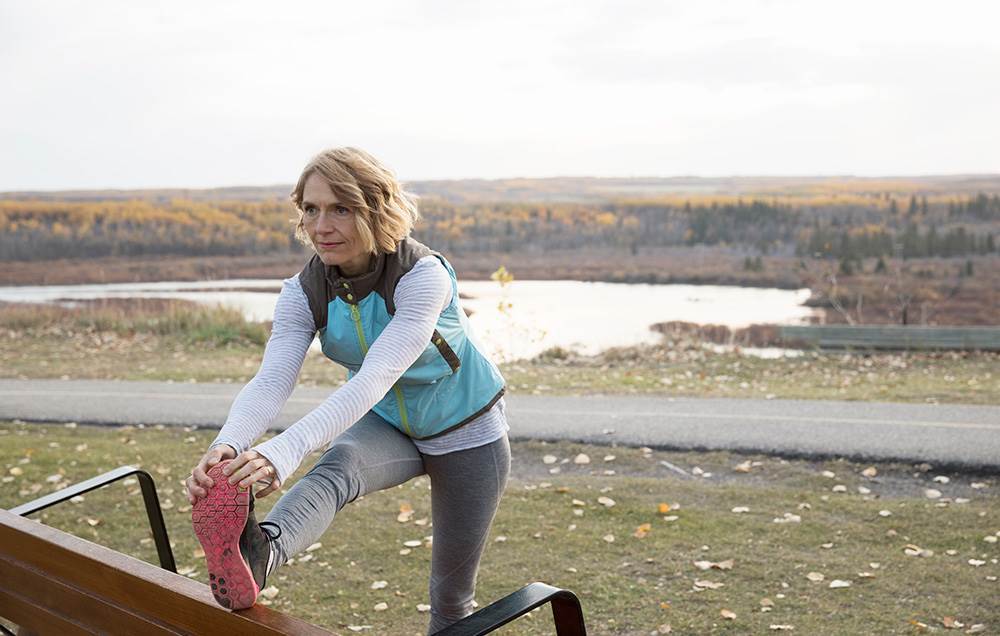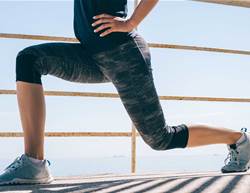Whether you’ve been a regular at the gym for years or you’re just starting to up the workout ante now, exercising after 40 can help you fight off age-related weight gain and reduce your risk of chronic diseases like diabetes, heart disease, and cancer. The downside: You're more apt to walk away with aches, pains, and even serious injuries than you were when you were in your 20s and 30s.
As you get older, your body just can't bounce back as quickly as it once did, so recovery takes longer. You may also have to contend with the cumulative effects of being very active for many years. Long-time runners, for instance, may find that their knees have endured some serious wear-and-tear. But those new to working out are also at risk, especially if they push too far too fast or don't learn proper form.
“The fact is that exercise-related injuries are more common after age 40, so it’s important to moderate your physical activity - and build up to your optimum workout intensity - if you’re in this demo,” says Liam Champion, a physical therapist. It’s also helpful to understand which injuries are most common, so you can make an extra effort to avoid them. Here, doctors, physical therapists, and personal trainers share the most common exercise-related injuries they see in their patients and clients who are over 40.





Photograph by Getty Images
1. Low back pain
It's estimated that one in six Australians have back pain, so it’s no surprise that this common hot spot may act up when you’re over 40. Exercise physiologist Rachel Straub says that age increases the likelihood of low back issues.
“Unfortunately, far too many people hurt their low back during exercise by overextending or arching their low backs, which is common during push-ups, kettle bell swings and even certain yoga poses,” says Straub. “One solution is to boost core strength, which helps keep your spine in a neutral position as you move through these and all of your exercises.”
Physical therapist Alice Holland agrees, but adds that you shouldn't use this as an excuse to shy away from exercise because a sedentary lifestyle is also bad for your back. “Over time, too much sitting deconditions the abdominal and gluteal muscles, which will cause extra pressure on the spinal column - ultimately leading to pain,” says Holland.
Photograph by Getty Images
2. Knee problems
Achy knees might not take you by surprise if you've been running, skiing, or biking for years, but it can also happen if you're new to exercise. “This is especially true for people who’ve had a long stint of inactivity and then try to lose weight by doing high-intensity workouts,” says Hollalnd. “To prevent knee pain over 40, my recommendation is to focus on conditioning and strengthening workouts that progress slowly.”
Orthopedic surgeonDr Barbara Bergin, adds that the knee is particularly susceptible to injury as we age because a weakened, older meniscus in the knee is more likely to tear. “Squats, deep knee bends, and lunges have the potential to cause a painful condition in the knee cap because they put increased pressure on that area,” says Bergin. “And women are more susceptible to this than men because of the physiology of our knees and hips.”
Photograph by Getty Images
3. Rotator cuff injuries
“The shoulder is the most mobile joint in the entire body - no other joint can match it in the degrees of freedom it has,” says Champion. “But this mobility reduces the shoulder joint’s stability,” which puts it at greater risk for injury, he adds.
Bergin says rotator cuff strains, tendonitis, bursitis and tears are very common after 40 because the shoulder is an area that’s particularly susceptible to repetitive strain. “Any exercise program that involves heavy lifting, repetitive lifting, burpees and push-ups puts older people at risk,” she says. “In fact, orthopedic surgeons often joke that these programs keep us in business.”
Photograph by Getty Images
4. Hamstring tears
If your once-a-week netball or softball game is the only physical exercise you've got time for, you could be particularly at risk for hamstring issues, says physical therapist Bryan Lang. “People over 40 often like to participate in team sports, but many times they’re not stretching and strength training the muscles they push to the limit when participating in those sports,” he says.
Activities that involve quick sprinting are the most likely to lead to a hamstring pull or tear. To prevent this problem, Lang recommends doing an exercise called the Nordic hamstring curl, which research shows can substantially reduce the rate of first-time hamstring strains: Hook your feet under a low bar or railing and tighten your core. Then slowly lower to the ground, landing on your hands (you’ll be in a modified push-up position), and press yourself back to the starting position. Repeat 12-15 times.
Photograph by Getty Images
5. Plantar fasciitis
If your job involves a lot of standing - or your workouts include a lot of jumping - you may end up with pain in your heel and the bottom of your foot, thanks to plantar fasciitis (an inflammation of the band of tissue that connects your heel bone to your toes). “Plantar fasciitis can also result from tightness in your calf muscles and heel,” says Lang.
One way to prevent this painful issue: Be sure to stretch your calves before exercise, and use a golf or lacrosse ball to massage the bottom part of your foot before and after your workouts, suggests Lang.









